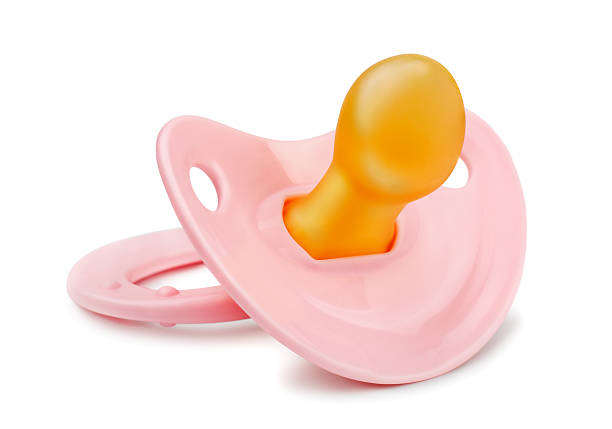
Image source: https://media.istockphoto.com/photos/pacifier-picture-id523967463?k=20&m=523967463&s=612×612&w=0&h=hquOsjV0Yxt99rlxt7_h0q-RWUzF1DPBwlSm0B0DfLo=
First, we’ll talk about why you want to introduce a pacifier to your baby in the first place and when you should consider starting this practice in your baby’s life. Then, we’ll cover tips and tricks on how to properly and safely introduce a pacifier to your baby so that she can get the most from her use of it over time. Finally, we’ll conclude with the most common mistakes parents make with their baby’s pacifier use so that you can avoid these pitfalls with your child.
What is a pacifier
The first thing you should know about your newborn’s pacifier is that it’s not actually a pacifier. A soother or binky is more fitting. These days, we typically refer to these devices as pacifiers as shorthand, but they’re usually called soothers or binkies by parents and caregivers. In any case, your baby’s lovey will play an integral role in her development from infancy through toddlerhood. It can be used as an aid for soothing during sleep and at naptime as well as a comforter when she’s awake and crying.
When should I start using a pacifier?
When to introduce your baby to pacifiers varies by child. Some doctors recommend waiting until around six months, while others suggest it’s fine as soon as your baby comes out of the womb. If you do wait until six months, you can try simply presenting one in front of your baby when you’re feeding him; he may or may not take it. You can also consider sterilizing one (or getting help from another adult) and placing it into his mouth while he’s sleeping; he might wake up and spit it out but that’s okay! After all, each child develops at his own pace; there is no best time for pacifier use because every child is different.
Best time to introduce the pacifier?
The best time to introduce your baby to a pacifier is anywhere up to six months of age. However, if it’s later than that don’t worry! Just keep in mind you’ll have more work cut out for you, as babies who are introduced later will likely need more convincing that it’s okay for them. If your child is over nine months old, you can still try using one but will want to follow certain steps so your child doesn’t become fearful of it.
Putting your baby to sleep with the use of a pacifier
Putting your baby to sleep with pacifiers is an effective way of soothing your baby and allowing you to help them drift off into deep, peaceful sleep. When your baby is having a hard time going down for a nap, try a combination of letting her suck on a binky while you go for a walk in the stroller. Something about the motion of baby strollers puts babies right to sleep. Make sure that you keep the binky in her mouth while transferring her to her crib or bassinet as it makes it easier to put her back to sleep should she wake up in the process.
Getting rid of the pacifier habit
In some cases, your baby may become dependent on his or her pacifier. This can make it difficult for you to wean your child off of it because he or she will fight sleep. And sucking is what babies do when they’re trying to fall asleep. The process of getting rid of a pacifier habit will depend on your child’s age and how much dependency he or she has developed. If you decide to try and get rid of it cold turkey, talk with your pediatrician about any concerns beforehand. It may be best to slowly take away pacifiers over time so that you don’t have an incredibly cranky baby during nap times or nighttime feedings.
If you’re thinking about introducing your baby to pacifiers, remember that it’s important to follow proper binky use. Always wash your hands before handling a pacifier, don’t let your child share their binky with anyone else. Be sure that they dispose of it properly when they’re done using it. To minimize dropping the binky on the floor and other unsanitary places, use clips such as Babeehive’s pacifier clips to keep it near the baby at all times.
